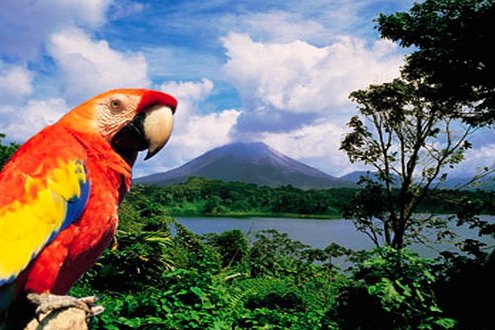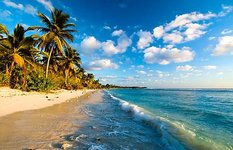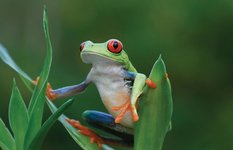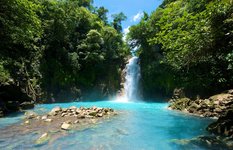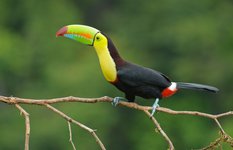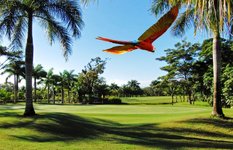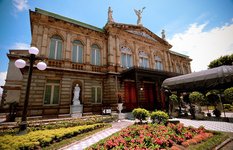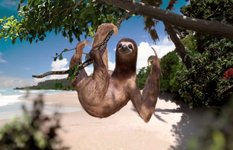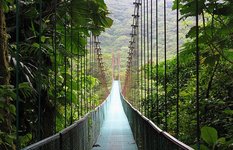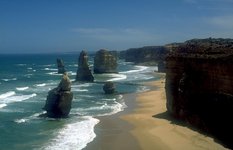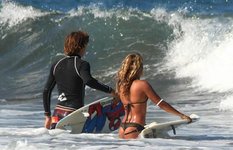 Been there
Been there
 Want to go
Want to go
 Ask friends for recommendations
Ask friends for recommendations
Things to do
Attractions and sights
 View Map
View Map
-
Due to its high altitude – some 4,660 ft (1,440 m) above sea level – Monteverde receives a steady supply of clouds and the life-giving moisture that they contain. The forest has lush vegetation, and a cool, damp climate. Giant trees are enshrouded in a cascade of orchids, bromeliads, mosses, and ferns. Several private reserves offer canopy skywalks and zipline.

-
Arenal Volcano was dormant for hundreds of years. In 1968 it erupted unexpectedly, destroying the small town of Tabacón. Since 2010, Arenal's volcanic activity virtually ceased.

-
A large artificial lake at the foot of Arenal volcano. One of the world's foremost windsurfing areas. From November through April the strong, dependable winds attract kite- and windsurfers to its western end. Fishing (primarily for rainbow bass) and kayaking are also popular recreational activities on this lake. The area surrounding the lake has good hiking, biking, bird watching, and horseback riding opportunities.

-
The lion's share of beach tourism is concentrated on the Pacific side, in the Central Pacific region near San José, the Nicoya Peninsula, and in the dry tropical forests of Guanacaste. Less touristed, but no less beautiful are the beaches in the tropical rainforest of the southern Pacific coast near Corcovado National Park, or on the exotic, rastafarian, eco-tourism paradise of the Caribbean side. Here's a quick list of the country's biggest and most popular beach destinations: list

-
Costa Rica has many surfing hotspots. The Pacific coast, particularly in the Central Pacific and Guanacaste, has some of the best surfing in Central America. The best time of year to surf is November - August. There are also several good kitesurfing spots along the Pacific coast (as well as on Lake Arenal). The windy season is October through May.

-
There is a wide variety of exciting rafting trips offered in Costa Rica. For many years, the rafting Mecca of Costa Rica was Turrialba, a large town embedded in the mountains near the Reventazon and Pacuare Rivers, on the Caribbean slope of Costa Rica. However, the Arenal Volcano area is now an increasingly-popular whitewater rafting destination.

-
The country's most breathtaking scenery and most abundant wildlife is on the Osa Peninsula, a third of which is protected by Corcovado National Park. National Geographic has called it "the most biologically intense place on Earth in terms of biodiversity".

-
The sweeping view of beaches, jungle, and shimmering Pacific dotted with rocky islets makes Manuel Antonio one of Costa Rica's most popular destinations, and home of its most luxurious hotels and fine-dining restaurants. The National Park has several coves with white sand beaches and is located in the tropical forest. It has a large land and marine biodiversity with beautiful reefs.

More attractions
 Hide Map
Hide Map
When to go
| |||||||||||||||||||||||||||||||||||||||||||||||||||||||||||
Best time to go:
Best during the northern hemisphere winter - it's a dry season there. Shoulder season: May, mid-November to mid-December. Visitor numbers are smaller and the threat of rain does exist but is minimal.
How to get there
By plane to San Jose Int'l Airport, then by rental car. You can also fly from San Jose to small local airports.
Reviews


